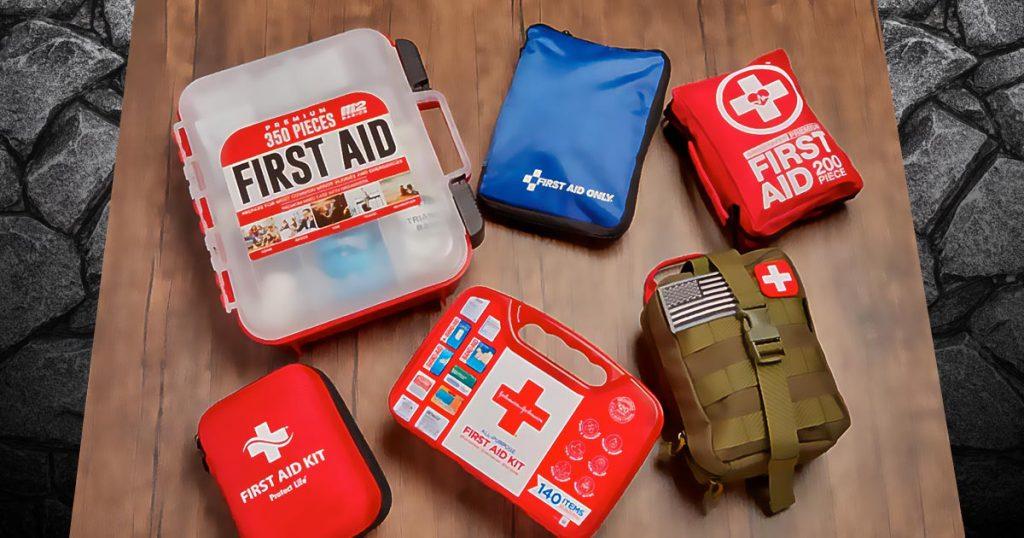First aid is the first help you give to someone who’s hurt or feeling unwell before the pros show up. It’s super important, especially for family members to know some basic first aid at home. In this article, we’ll chat about why it’s crucial to learn first aid, the perks it brings, where you can take courses, and why having a well-stocked first aid kit at home is a must.
Why Should You Learn First Aid?
Learning first aid is important because it helps you jump into action during emergencies. Those first few minutes can really make a difference between life and death. By picking up some first aid skills, your family can give immediate help until professional medical people get there, which can save lives and lessen the impact of injuries or illnesses.
Advantages of Learning First Aid
Accidents can happen anywhere, including within the familiar confines of our homes. Knowing first aid is a game changer when dealing with things like burns, cuts, choking, falls, electric shocks, poisoning, and heart issues. If you can provide quick help, you can stabilize the person and stop things from getting worse until help arrives.
But the benefits of learning first aid go beyond just saving lives. It helps you stay calm and collected in tough situations, letting you figure out what to do and how to help. Plus, having a handle on first aid means you’re more aware of safety risks and can take steps to prevent accidents in the first place.
Where Can We Learn First Aid Courses?
Numerous avenues exist for learning first aid, including local community centers, hospitals, and organizations like the Red Cross. Many of these institutions offer comprehensive first-aid courses that cover a wide range of topics, from basic techniques to more advanced procedures. Additionally, online resources and tutorials provide accessible and convenient options for learning first aid skills.
- American Red Cross
- American Heart Association
- National Safety Council
- Local hospitals and clinics
- Community colleges and universities
- Online platforms: There are several online platforms that offer first aid courses, such as Udemy, Coursera, and edX.
Frequently Asked Questions (FAQ) about Learning First Aid
What will I learn in a first aid course?
First aid courses cover various topics, including assessing and managing common injuries, CPR (Cardiopulmonary Resuscitation), choking, bleeding control, and responding to medical emergencies such as heart attacks or strokes.
How long does it take to complete a first aid course?
The duration of a first aid course can vary. Basic courses typically range from a few hours to one day, while more advanced or comprehensive courses may span multiple days or weeks.
Can I learn first aid online?
Yes, there are online resources and platforms that offer first-aid training. Comprehensive learning is ensured in these courses through a combination of instructional videos, interactive modules, and assessments.
Do I need any prior medical knowledge to learn first aid?
No, you do not need prior medical knowledge to learn first aid. Irrespective of one’s medical background, these courses are specifically designed to equip individuals with the essential skills and knowledge required.
Are there different levels of first aid certification?
Certainly, first aid certification encompasses various levels, spanning from fundamental to advanced proficiency. Examples include Basic First Aid, Wilderness First Aid, and First Responder courses.
How often should I refresh my first-aid skills?
It is recommended to refresh your first aid skills every two to three years to stay updated on new techniques and guidelines. Regular practice and refresher courses help maintain proficiency.
Can I use my first aid skills on family members or friends?
Yes, you can use your first aid skills to assist family members, friends, or anyone in need. First aid knowledge is valuable in both everyday situations and emergencies.
Are there legal implications to providing first aid?
Generally, as long as you provide first aid in good faith and within your level of training, you are protected by Good Samaritan laws in many jurisdictions. It is crucial to verify specific details by referring to local laws and regulations.
Can children learn first aid?
Yes, children can learn age-appropriate first-aid skills. Basic first aid knowledge can be taught to children, empowering them to respond in emergency situations and seek adult help when needed.
Can learning first aid help in non-emergency situations?
You don’t need a major emergency to use first aid. Even for little things like cuts or a sudden headache, knowing what to do can really help. Plus, it’s good to know how to be there for someone who’s feeling down or scared.
Can I earn a living after learning first aid courses?
Having a first aid certification might not land you a job right away, but it’s a big plus on your resume. Lots of jobs, like in healthcare, teaching, childcare, sports, hotels, and security, look for people who know how to help someone if they get hurt. And if you really get into it, you could even become a first aid teacher and make some extra cash!
The Importance of First Aid: Safeguarding Home and Family
The importance of first aid learning, particularly within the home environment where children are prone to various hazards, cannot be emphasized enough. Imagine this: You’re having a backyard barbecue with your family and friends when a child trips and falls, scraping their knee. Without first aid knowledge, you might panic and not know what to do. But with a little training, you can quickly assess the situation, clean the wound, apply a bandage, and offer comfort to the child.
So, the next time you’re thinking about taking a first aid course, remember that it’s not just about preparing for emergencies. It’s about equipping yourself with the knowledge and skills to safeguard your home and family, every day.

